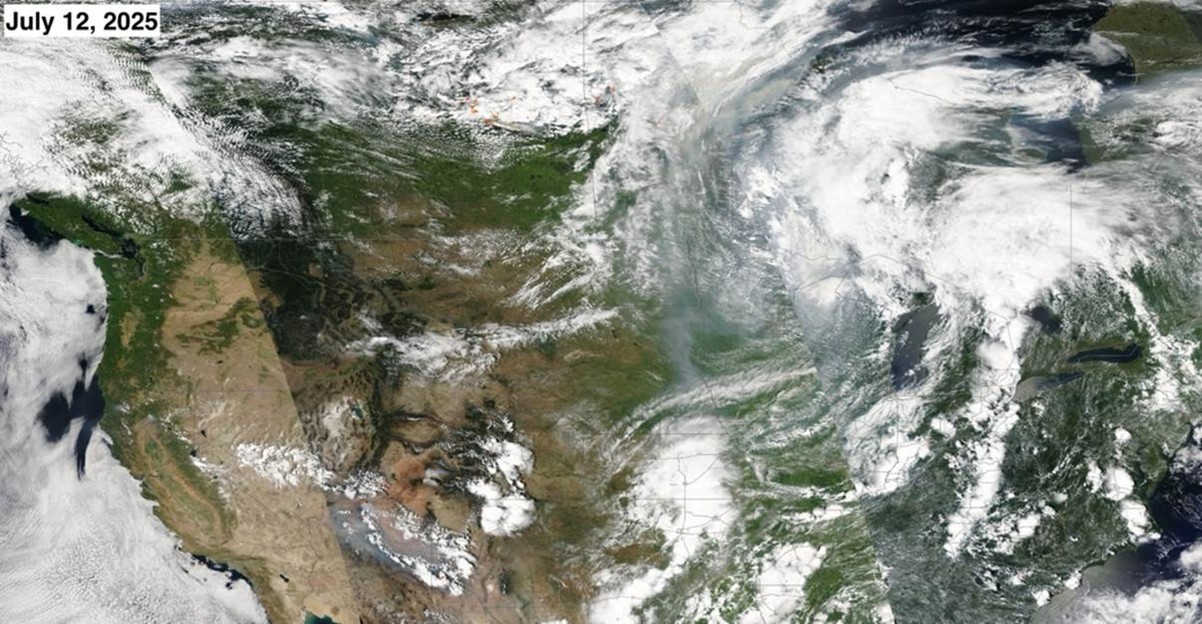Wildfire without borders: Why we need smarter early warning and risk response

Today’s Wildfires have spun far beyond nature’s balance, driven by climate variability, land-use change, and growing human pressure. They’re no longer just forest events – they’ve become crises that ripple through health systems, economies and the global climate.
Take the July 2025 Canadian wildfires: over just one week, nearly 3,000 fires burned more than 4.6 million hectares across western Canada. Smoke didn’t stop at the border. Cities in the US Midwest saw air pollution spike to hazardous levels (Air Quality Index (AQI) over 150 for several hours), as tracked by satellites like MODIS, GOES-R and VIIRS.
These fires show why wildfires are no longer local problems. Smoke travels hundreds of miles, carrying fine particulates that can cause severe harm to lungs and hearts, particularly in children and older adults. While the World Health Organization recommends safe daily levels below 15 µg/m³, wildfire smoke can push it past 100 µg/m³, levels known to increase hospitalisations and even deaths.
Despite significant advances in monitoring air quality, we’re still playing catch-up. Satellites can spot thermal anomalies and smoke, but gaps in resolution, latency, and real-time integration leave responders with limited tools.
The real opportunity? Fusing systems like GOES-R’s geostationary coverage, VIIRS’s fine resolution, and TEMPO’s air composition data into an integrated, real-time early warning network.
But technology alone won’t save us. We need systems that connect early detection with public health alerts, emergency response and community resilience; across borders. This includes more innovative land management practices (such as timed and staggered prescribed burns), faster data sharing and enhanced local preparedness.
Ultimately, wildfire governance must be holistic and adaptive, not just reactive. It’s about turning surveillance into safety, warnings into action, and communities into partners. After all, fire may be natural, but catastrophe is a human creation. Facing an era of fiercer, faster wildfires, we need to rethink not just how we monitor fires, but how we live with them.
This blog is an excerpt from the full article available at www.bridgerpf.org.